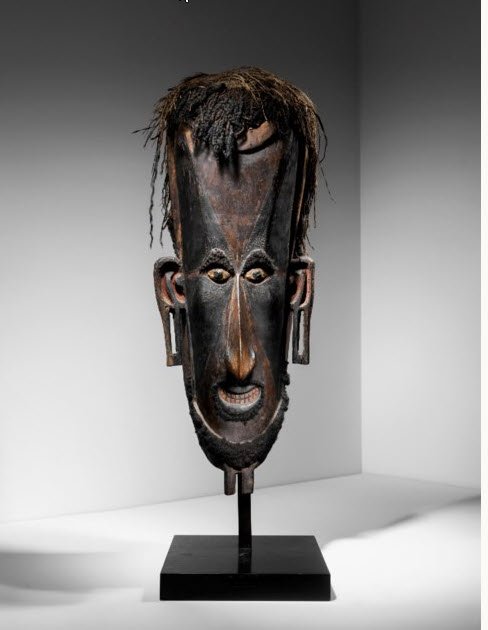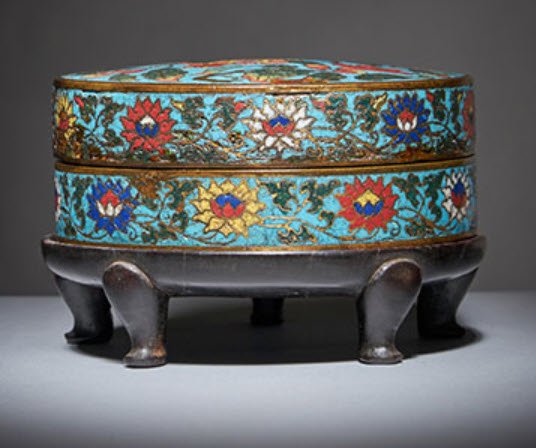When does ownership of art, antiques and collectibles pass from seller to buyer?
Ownership of art, antiques and collectibles passes from seller to buyer as soon as they have agreed on the artwork to be sold and on its sale price. This is the case even if the art, antique or collectible has not yet been delivered or the price has not yet been paid (article 1583, Civil Code). However, the buyer and the seller can contractually agree to postpone the transfer of ownership, until payment or delivery of the artwork, for example.
Implied warranties
Does the law of your jurisdiction provide that the seller gives the buyer any implied warranty?
Under French law, there is no implied warranty of title per se. However, the seller gives the buyer an implied warranty of peaceful possession. In other words, the seller warrants to the buyer that the art, antique or collectible is sold free of any third-party claims. Hence, if the buyer’s title is challenged, the seller may have to refund the sale price independent of damages. The implied warranty of peaceful possession may be excluded or limited by contract. An action based on a breach of warranty of peaceful possession is subject to a five-year statute of limitations, which starts to run as of the date of the breach.
Registration
Can the ownership of art, antiques or collectibles be registered? Can theft or loss of a work be recorded on a public register or database?
There is no title registry of art, antiques or collectibles.
There is also no public database of stolen works. International databases are typically used, such as the Art Loss Register and the Interpol database. The French Central Office for the Fight against Illicit Traffic in Cultural Goods has a specific database called TREIMA, but it is not available to the public.
However, art, antiques and collectibles that either belong to public entities or are classified as historical monuments are respectively registered on the Joconde and the Palissy database. These databases contain lists of stolen artworks owned by public entities or classified as historic monuments.
Good-faith acquisition of stolen art
Does the law of your jurisdiction tend to prefer the victim of theft or the acquirer in good faith of stolen art?
French law tends to prefer the acquirer in good faith of stolen art over the victim of theft for several reasons.
First, each transfer of an artwork creates a new title (independent from the former) that stems from the mere possession of the artwork, according to a core principle under French law that states that possession equals title as far as movable goods are concerned (article 2276, Civil Code). If the possessor of the stolen art, antique or collectible acquired it in good faith, ownership in the art, antique or collectible automatically vests in the acquirer.
Second, the claim of ownership of the victim of theft is subject to a three-year statute of limitations, which is shorter than the ordinary five-year limitation period.
Third, if the good-faith possessor of a stolen artwork, antique or collectible acquired it at an art fair, at auction or from a professional of the art market, the original owner may only obtain its restitution in consideration of the reimbursement of the price the possessor paid for it (article 2277, Civil Code).
Finally, good faith is always presumed (article 2274, Civil Code). A possessor is in good faith if he or she regards himself or herself as entitled to the property, and this belief must be reasonable. The burden of proof of the possessor’s bad faith thus lies with the victim of theft.
As an exception to the above principles, when the victim of theft is a public entity, and the stolen art, antique or collectible belongs to the public domain (in the sense of public property law, not to be confused with the public domain in the sense of intellectual property law), the public victim’s restitution claim is not subject to any statute of limitations, and the good-faith possessor is not entitled to any compensation.
Acquiring title to stolen art through prescription
Must the professional seller of art, antiques or collectibles maintain a register of sales?
To ensure the traceability of objects, all art market professionals (including auctioneers) must maintain a register of sales (article 321-7, Penal Code).
The register must include the seller’s and the professional intermediary’s identity and domicile, a precise description of each object, including its nature and provenance (article R321-3, Penal Code), the purchase price and the method of payment (article R321-5, Penal Code). Those elements must be kept for a decade and can be consulted by the police and tax services, customs, competition, consumer affairs and fraud prevention services (article R321-10, Penal Code).
Breaches of those obligations are punishable by six months’ imprisonment and a fine of €30,000 (article 321-7, Penal Code).
If ownership in stolen art, antiques or collectibles does not vest in the acquirer in good faith, is the new acquirer protected from a claim by the victim of theft after a period of time?
Ownership in stolen art, antiques or collectibles automatically vests in the possessor who acquired them in good faith. The victim of theft may only claim ownership for a period of three years as of the date of the theft.
Risk of loss or damage
When does risk of loss or damage pass from seller to buyer if the contract is silent on the issue?
In the absence of any contrary stipulations of the contract on the issue, and similar to the transfer of ownership, risk of loss or damage automatically passes from seller to buyer as soon as both have agreed on the artwork to be sold and on its sale price, even if the buyer is not in possession of the art, antique or collectible (article 1196, Civil Code).
The parties may contractually agree that the risk will pass at a different time, notably upon delivery of the artwork to the buyer. This clause is commonly negotiated by the buyer to protect himself or herself against the hazards that may notably occur during transportation of the artwork.
Due diligence by buyer
Must the buyer conduct due diligence enquiries? Are there non-compulsory enquiries that the buyer typically carries out?
There is no formal legal obligation for the buyer to conduct due diligence enquiries when buying art, antiques or collectibles. However, in the event the buyer wishes to have the sale voided on the basis of an error committed on the substantial qualities of the artwork bought – such as an error on the correct attribution of the work, on its dating or on its condition – the courts may take into account the due diligence enquiries carried out by the buyer.
In the absence of such enquiries, the courts may find the professional buyer to have been reckless in his or her purchasing of the art, antique or collectible (particularly when the buyer is a professional of the art market). However, a non-professional buyer may reasonably rely on the description of the artwork when buying from a professional seller.
Typically, when conducting due diligence enquiries, the buyer should do the following:
request documents confirming the validity of the seller’s title (free of any third-party claims);
request documents evidencing the provenance of the art, antique or collectible;
search available databases of stolen works – notably the Art Loss Register – if any doubt arises on the provenance of the art, antique or collectible;
confirm the authenticity of the art, antique or collectible and possibly request an expert opinion; and
establish whether the art, antique or collectible was legally imported into the country or, if it is to be exported, whether an export certificate or licence has been obtained or if he or she must obtain it.
Due diligence by seller
Must the seller conduct due diligence enquiries?
There is no formal legal obligation for the seller to conduct due diligence enquiries when selling art, antiques or collectibles. However, similarly to the buyer, in the event the seller purports to have the sale of an artwork, antique or collectible voided based on an error and in the event his/her liability is challenged, the courts will take into account the due diligence enquiries carried out by the seller. In the absence of such enquiries, the courts may find the seller to have been reckless in his or her selling of the art, antique or collectible and either reject the action to void the sale or find him/her liable for having sold an inauthentic piece.
Professionals of the art market are subject to anti-money laundering obligations according to which they must in particular conduct due diligence on the identity and title of the sellers, when the transaction or series or transactions in which they are involved amounts to €10,000 or more. In addition, certain art market professionals have adopted codes of ethics in which they provide for a certain number of due diligence enquiries to be conducted, mainly on the authenticity and the provenance of the art, antique or collectible. Most codes of ethics are soft laws (ie, not binding), but courts usually rely on these sets of non-binding rules to assess the potential liability of art market professionals.
Acquisition in bad faith
Can ownership in art, antiques or collectibles vest in the acquirer in bad faith after a period of time?
Yes, ownership in art, antiques or collectibles may vest in the acquirer in bad faith after a period of adverse possession. Possession is composed of two elements: a physical element (material acts similar to those that a legitimate owner would perform) and a psychological element (the intention to hold for oneself).
To adversely possess, the possession must be continuous and uninterrupted, peaceful, public and unequivocal (article 2261, Civil Code). If one of those requirements is absent, the possession is vitiated, and the possessor is unable to acquire property through the passage of time.
There is controversy surrounding the period of time that is required for the ownership of movable property (as opposed to real property), such as art, antiques or collectibles, to vest in the acquirer in bad faith as there is no specific provision in the law. Depending on the interpretation of the provisions of the Civil Code, the period may be five years or 30 years. Authors generally consider that 30 years of adverse possession is more consistent with the legal framework.
Other implied warranties
Does the law provide that the seller gives the buyer implied warranties other than an implied warranty of title?
There are three general implied warranties that the seller gives to the buyer in a sales contract:
a warranty of peaceful possession;
a warranty of conformity, under which the seller warrants to the buyer that the sold asset conforms to its description (article 1603, Civil Code); and
a warranty against hidden defects, by which the seller warrants the buyer against defects in the asset sold that make it unfit for its intended use (article 1641 et seq, Civil Code).
Warranties of conformity are seldom used in the art market. An action based on a warranty of conformity is subject to the ordinary five-year statute of limitations, which starts to run from the day the buyer discovers the breach of the warranty. It may not be excluded when the buyer is not a professional in the same field.
Warranties against hidden defects are also almost never used in the art market – an artwork normally does not have a ‘use’ in the sense of this warranty. The action of the buyer based on this warranty is subject to a two-year statute of limitations, which starts to run from the discovery of the defect (article 1648, Civil Code). It may not be excluded when the buyer is not a professional in the same field.
There is also a specific warranty that the seller gives the buyer in the art market that relates to the accuracy of the description of the artwork. The wording used to describe the art, antique or collectible put up for sale gives rise to warranties. For instance, according to the Marcus Decree (Decree No. 81-255 of 3 March 1981 on the prevention of fraud in art and collectible sales):
the title or denomination of a work directly followed by a reference to a historical period, century or era warrants to the buyer that the work or item was actually produced during the period of reference;
the use of the term ‘attributed to’ followed by the artist’s name indicates that the work or the object was executed during the period of production of the artist mentioned and that serious assumptions indicate that this artist is the likely author; and
the use of the term ‘school of’ followed by the artist’s name warrants that the author of the work has been the pupil of the master cited or has been known to have been influenced or to have benefited from his or her technique.
Therefore, sellers and intermediaries of the art market must pay particular attention to the terminology they use when describing the art, antique or collectible put up for sale as it may imply certain warranties.
Cancelling the purchase of a forgery
If the buyer discovers that the art, antique or collectible is a forgery, what claims and remedies does the buyer have?
The buyer of an artwork that transpires to be a forgery may bring an action to void the sale on the basis that his or her consent was vitiated by an error on the authenticity of the artwork. If the buyer successfully demonstrates that his or her consent was vitiated, the contract is voided ab initio (ie, the sale is treated as having never been concluded). Hence the parties must be returned to the situation they were in before contracting the sale: the buyer must return the artwork to the seller, and the seller must refund the price to the buyer.
The action to void a sales contract is subject to a five-year limitation period, which starts to run from the discovery of the error, it being specified that no action on a contract may be brought once 20 years have elapsed after the date the contract was entered into.
If the seller is in bad faith (ie, he or she sold the artwork, antique or collectible knowing it was a forgery), the buyer may also claim for damages on the basis of a contractual liability action. The act of knowingly selling a forgery as an original is also subject to criminal sanctions.
Cancelling the sale of a sleeper
Can a seller successfully void the sale of an artwork of uncertain attribution subsequently proved to be an autograph work by a famous master by proving mistake or error?
This depends on the seller’s understanding at the time of the sale and on the wording used to describe the artwork. If the artwork is sold as a ‘copy of’, ‘studio of’ or ‘circle of’ and the seller can show that he or she contracted the sale in the erroneous belief that the artwork could not be an autograph work, he or she will have an action to void the sale.
On the other hand, if the artwork is sold as ‘attributed to’, the seller does not have an action to void the sale as he or she accepts the risk that the work might be an autograph piece (as it also might not be).
UGGC Avocats - Jean-François Canat, Laure Assumpçao, Line Alexa Glotin and Philippe Hansen https://www.lexology.com/library/detail.aspx?g=af1317e4-a416-41b1-b0af-54061b9c6108














































